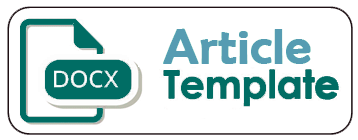THE LITERACY COMPETENCY OF THE STUDENTS IN ACCOUNTING DEPARTMENT OF SEMARANG STATE POLYTECHNIC IN BUSINESS PRESENTATIONS IN ENGLISH LANGUAGE VIEWED FROM ENGLISH AS A FOREIGN LANGUAGE
DOI:
https://doi.org/10.32497/jolali.v2i1.4274Keywords:
business competition, competence, literacyAbstract
Literacy is defined as the ability to read and write. Technological advances have resulted a shift of its interpretation, so that the applications of the scope of literacy are becoming wider and more complex, therefore this affects the literacy competence. The aim of this study is to examine the literacy competencies which cover three aspects of abilities, namely language aspects, social aspects, and cognitive aspects of of the students majoring in Accounting of Semarang State Polytechnic in making business presentations in English language. The data used in this research is recorded from the sample of students in doing the presentation. The samples of this research are 60 students from the Accounting Department who are taken from the all 6 Study Programs in Accounting Department, therefore, there are 10 students of each Study Program. Hopefully, that the results of this study can contribute to the development of literacy theory, applied language theory, as well as the theory of learning language and literacy in general. Moreover, it will increase the scores of the students in making business presentations in English. The expected output of this study is the map of the literacy competence of the students majoring in Accounting Department in Semarang State Polytechnic. While the expected outcome is improvements in the teaching and learning process in Business English Course, as well as improvement the students competence in doing business presentation .
Keywords: business presentation, competence, literacy
References
Assenaova, Danielaa. 2010. Spoken Vs Written Or Dialogue Vs Non
Dialogue? Frequency Analysis of Verbs, Nouns and Prepositional Phrases in Bulgarian. Slovo (Uppsala) Journal of Slavic Language and Literatures. No. 51, Pp. 115-127
Brown, H. D. 2004. Language Assesment: Principles and Classroom Practices, Pearson Longman.
Cohen, L. Et all. (2007). Re4search Methods in Education Sixth Edition. London; Routledge
Gall, J. P. 1990. Social Linguistics and Literacies: Ideology in Discourses. London: Falmer Press. ISBN 978-0-203-94480-6
Hamdan, Yusuf & Ratnasari. 2016. Kemampuan Presentasi Dalam Memasarkan Produk Usaha. Jurnal Penelitian Komunikasi vol. 19 no.2, Desember 2016: 109-122 ISSN: 1410-8291/ e-issn:2460-0172/www.jpk.bppkibandung.id DOI:10. 20422/jpk.v19i2.92
IPpolito, et al. 2008. Why Adolescent liteacy matters now. Harvard Colledge (hhtp://hepg.org/her-home/issue/harvard-educational-review-volume-78-issue/l/hierarticle/why-adolescent-literacy-matters-now_638)spring 2008 Issue
Kern, Richard. 2000. Literacy and Language Teaching. Oxford: OUP
Mercer, Neil. 2000. Words and Minds: How to use Language to Think Together. London: Routledge
Samson. 2008. International Handbook of Educational Evaluation (vol 9). Boston.
UNESCO. 2004. The Plurarity of literacy and its implications for Policies and Programmes. (www.unesco.org/education )
UNESCO. 2006. Education for All Global Monitoring Report. Chapter 6: Undersatanding of Literacy (www.unesco.org/education/GMR2006/full/chapter6.eng.pdf)
Downloads
Published
Issue
Section
License
Authors who publish with this journal agree to the following terms:- Authors retain copyright and grant the journal right of first publication with the work simultaneously licensed under a Creative Commons Attribution License that allows others to share the work with an acknowledgement of the work's authorship and initial publication in this journal.
- Authors are able to enter into separate, additional contractual arrangements for the non-exclusive distribution of the journal's published version of the work (e.g., post it to an institutional repository or publish it in a book), with an acknowledgement of its initial publication in this journal.
- Authors are permitted and encouraged to post their work online (e.g., in institutional repositories or on their website) prior to and during the submission process, as it can lead to productive exchanges, as well as earlier and greater citation of published work (See The Effect of Open Access).





